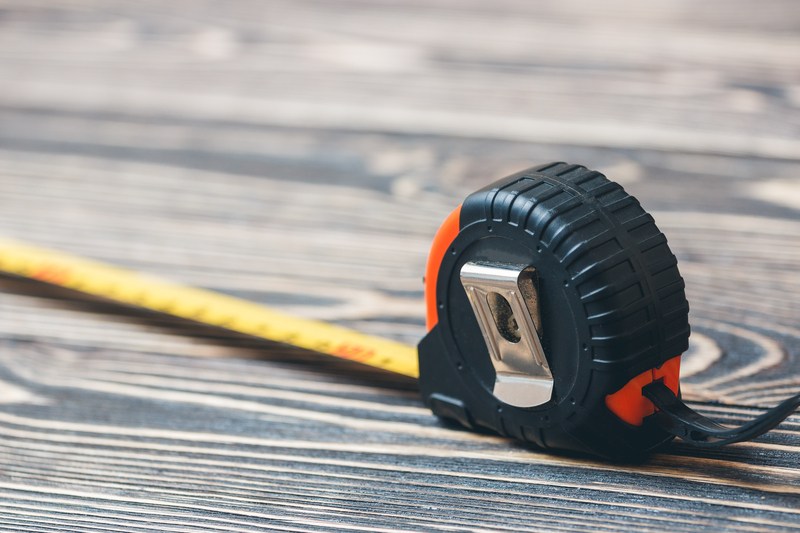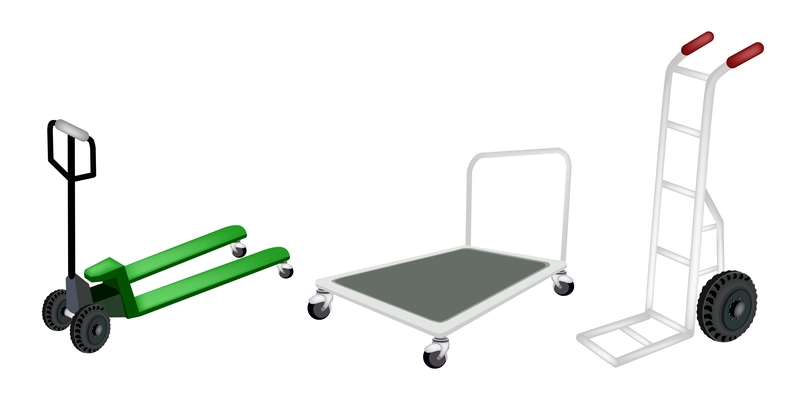Maximizing Space and Minimizing Stress When Packing for a Move
Moving can be one of life's most stressful experiences, but with the right approach, you can maximize space in your packing and minimize the stress involved. Whether you're relocating down the block or across the country, strategic planning and organization are the two main keys to success. In this comprehensive article, we'll explore practical and expert-backed tips for efficiently packing for a move, making the process more manageable, and ensuring that nothing gets lost, broken, or forgotten.
Why Strategic Packing Is Essential When Moving
When it comes to moving houses, packing is often the most time-consuming part of the process. However, taking a mindful and organized approach can reduce anxiety, save money on moving supplies, and make unpacking a breeze. Efficiently maximizing your space is about more than just fitting as much as possible into your boxes. It's about minimizing stress, protecting your belongings, and ensuring a smoother transition to your new home.

Early Preparation: Setting the Stage for a Successful Move
One of the best ways to minimize moving stress and maximize packing space is to start preparing as early as possible. Here are some critical steps to kick off your move:
- Make a Moving Checklist: Lists help you prioritize and stay organized. Include tasks like collecting boxes, changing your address, and scheduling utility shut-offs.
- Gather Packing Supplies Early: Assess your packing needs and start collecting boxes, bubble wrap, packing tape, and permanent markers.
- Set Aside Essentials: Designate a box or suitcase for items you'll need immediately upon arrival, such as toiletries, chargers, and a few changes of clothes.
Declutter Before Packing: The Key to Maximizing Space
Packing items you no longer want or need wastes both box space and effort. Decluttering ensures you're only taking what you truly need to your new home, significantly helping save space while packing for a move. Try these methods during your pre-packing phase:
- The Four-Box Method: Label boxes as Keep, Donate, Sell, and Trash. Touch every item and place it into one of these categories.
- Host a Garage Sale: Selling unneeded items puts cash in your pocket, lightens your load, and eliminates unnecessary clutter.
- Donate to Charity: Give unwanted clothes and household items a new life by donating to local organizations.
Choosing the Right Packing Supplies for Efficiency
Quality packing supplies not only help maximize box space but also ensure your belongings are protected. Don't skimp on essentials like sturdy boxes, heavy-duty tape, bubble wrap, packing paper, and specialty containers for dishes or wardrobes.
Box Sizes Matter
- Small boxes: Ideal for heavy items such as books or tools.
- Medium boxes: Versatile and perfect for kitchenware and electronics.
- Large boxes: Good for lightweight but bulky items like linens, clothing, and pillows.
Specialty Packing Materials
For fragile items, invest in dish packs, wardrobe boxes, and bubble wrap. These not only maximize your space by keeping things organized but also minimize the risk of accidental damage.
The Art of Packing: Maximizing Every Inch
Pack Like a Pro: Space-Saving Packing Tips
How you pack your boxes can make a world of difference. Use these space-maximizing strategies:
- Roll Clothes, Don't Fold: Rolling clothing not only saves space but also minimizes wrinkles.
- Nest Items: Place smaller items inside larger ones, such as putting socks inside shoes or packing cups in pots.
- Utilize Every Nook and Cranny: Fill empty spaces in boxes with soft items like towels or clothing to prevent belongings from shifting during transit.
Layer and Distribute Weight Evenly
- Place heavier items on the bottom and lighter items on top.
- Distribute weight evenly among all boxes so none are too heavy to carry.
- Label each box with its destination room and a brief list of contents. This will save time and stress when unpacking.
Strategically Pack Boxes by Room
Group items by the room they belong to. Mark boxes accordingly, for example, Kitchen - Dishes or Bedroom - Linens. This not only maximizes your packing efficiency but also makes unpacking much faster and less stressful.
The Stress-Free Packing Timeline
Plan ahead to minimize stress and avoid last-minute chaos. Here's a general packing timeline you can follow:
- 6-8 weeks before moving:
Start decluttering, gather moving supplies, and begin packing items you use infrequently (seasonal decor, keepsakes, seldom-used appliances). - 3-4 weeks before moving:
Continue packing room by room. Be sure to label everything clearly. - 1 week before moving:
Pack most of your clothes, kitchenware, and daily essentials, leaving just enough to get by until moving day. - 1-2 days before moving:
Pack up your essentials box or suitcase. Double-check all rooms, closets, and storage spaces.
How to Minimize Stress on Moving Day
Stay Organized and Calm
On the day of the move, being organized is critical for keeping stress levels low. Here's how:
- Keep your essentials bag handy for quick access to important items.
- Double-check your moving checklist to ensure nothing is overlooked.
- Enlist help from friends or hire professional movers to alleviate some of the workload.
- Take regular breaks, hydrate, and remember to eat to keep your energy up.
Protect Valuables and Essential Documents
Keep important documents, valuable jewelry, and treasured keepsakes separate from the main moving load. Carry them personally or use a secure container for peace of mind.
Professional Movers vs. DIY: Making the Right Choice
Deciding whether to hire professionals or handle the move yourself will impact both your packing process and your stress levels. Professional movers can often pack your items more quickly and efficiently, ensuring that space is maximized and damage is minimized. However, with the right strategy and help from friends or family, DIY moving can be just as efficient while saving you money.
Benefits of Professional Packing Services
- Expertise: Professional packers know how to maximize packing space and pack efficiently.
- Speed: A trained moving team can often finish packing in a fraction of the time it takes a homeowner.
- Protection: Professional-grade supplies and experience minimize the risk of damage.
DIY Packing Tips
- Recruit friends or family to help share the load.
- Start packing well in advance of your move date.
- Refer to your checklist regularly to stay on track.
Using Storage Units to Maximize Space and Flexibility
If you're downsizing or have a gap between move-out and move-in dates, renting a storage unit can further minimize stress when packing for a move. Temporary storage provides flexibility, allowing you to move non-essential items out of your way and tackle the move in stages.
How to Effectively Use a Storage Unit
- Pack items you will not need immediately together and move them to storage first.
- Label storage boxes very clearly - you may not see them for a while!
- Organize your unit with walkways so items are accessible if needed before the final move-in.
Special Packing Considerations
Packing Electronics Safely
- Whenever possible, pack electronics in their original packaging for the best protection.
- Use anti-static bubble wrap and label all cords and accessories.
- Backup important data before moving computers or hard drives.
Packing Fragile and Valuable Items
- Wrap breakables individually in bubble wrap or packing paper.
- Fill all empty spaces in boxes with cushioning material to prevent shifting.
- Clearly mark boxes as Fragile and indicate which side should face up.
Preparing Large Furniture and Appliances
- Disassemble large pieces when possible to save space and prevent damage.
- Keep screws and hardware in labeled plastic bags, and tape them to the corresponding furniture.
- Wrap furniture and appliances in moving blankets or shrink wrap.
Making Unpacking Efficient and Stress-Free
Packing strategically for a move not only saves space and reduces hassle during the move but also makes unpacking simpler and less stressful. Here's how you can streamline the process:
- Unpack essential rooms first, such as the kitchen and bedrooms.
- Refer to your labels and inventory lists to find what you need quickly.
- Break down boxes as you unpack to clear space and prevent clutter from piling up in your new home.

Quick Tips for Maximizing Packing Space and Minimizing Stress
- Color code your boxes by room for easy identification at a glance.
- Use suitcases, duffel bags, and baskets to pack items and reduce the number of moving boxes needed.
- Try vacuum-sealed bags for bulky textiles like linens, comforters, or out-of-season clothing--they save substantial space.
- Photograph electronics set-ups before disconnecting them to make reassembly easier.
- Stay flexible and positive; even with the best planning, some hiccups are inevitable. Take things one step at a time.
Conclusion: The Smart Approach to Packing for Your Move
By following these expert tips for maximizing packing space and minimizing moving stress, you'll not only make the process more efficient but also give yourself peace of mind during a potentially challenging time. Whether you're packing for a local move or embarking on a cross-country relocation, a systematic and thoughtful strategy will help you get settled into your new home faster and with less hassle. Remember: start early, stay organized, and don't hesitate to seek help when needed.
Happy moving!
```


